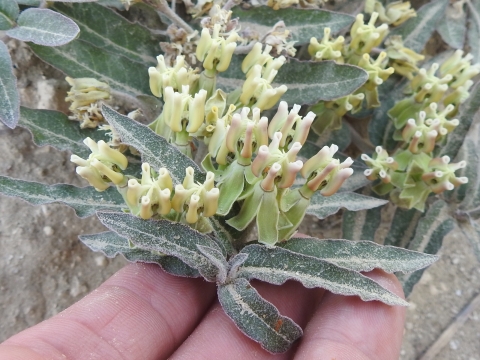AUSTIN, Texas – Following a review of the best available scientific information, the U.S. Fish and Wildlife Service (Service) is listing prostrate milkweed as endangered under the Endangered Species Act (ESA). The Service is also designating 661 acres of critical habitat in Starr and Zapata counties near the Rio Grande in Texas to help conserve the imperiled plant.
Prostrate milkweed is a rare flowering plant with only 24 populations remaining in south Texas and northeastern Mexico. The designated critical habitat is currently occupied by the species and consists of 137 acres of federally owned and managed land on Lower Rio Grande Valley National Wildlife Refuge, and 523 acres of privately owned land and county roads and rights of way.
Threats to prostrate milkweed include habitat loss from root-plowing and degradation from invasive plant encroachment; energy development, road and utility construction, and right-of-way maintenance; border security and enforcement activities; and the demographic and genetic consequences of small population sizes.
Establishing critical habitat raises awareness of prostrate milkweed and may help us work more effectively with partners to focus our conservation efforts to preserve the remaining species and slow the rate of its declining habitat. Critical habitat for the plant includes areas that are particularly important for the conservation of the species. The designation requires federal agencies to consult with the Service if they are conducting, funding, or permitting activities to ensure their activities are not likely to destroy or adversely modify designated critical habitat. Designation of critical habitat does not affect land ownership, nor does it establish a refuge or preserve, and it has no impact on private landowners taking actions on their land that do not require federal funding or permits.
Its cream, yellow, green or pink flowers attract and support native pollinators, especially large bees and wasps, and it is a host plant for monarch butterflies. Conserving rare plants and healthy habitats ensures America’s shared natural heritage continues to endure for future generations. Flowering plants also support wildlife—including pollinators—and bring aesthetic beauty to our natural world and public lands.
Today’s announcement comes as the ESA turns 50 years old in 2023. Throughout the year, the Department of the Interior will celebrate the ESA’s importance in preventing imperiled species’ extinction, promoting the recovery of wildlife and conserving the habitats upon which they depend. The ESA has been highly effective and credited with saving 99% of listed species from extinction. Thus far, more than 100 species of plants and animals have been delisted based on recovery or reclassified from endangered to threatened based on improved conservation status, and hundreds more species are stable or improving thanks to the collaborative actions of Tribes, federal agencies, state and local governments, conservation organizations and private citizens.
The proposed and final rules, as well as the comments received on the proposed rule, are available at http://www.regulations.gov in Docket No. FWS-R2-ES-2021-0041.
The final listing goes into effect 30 days following the date of publication in the Federal Register.




